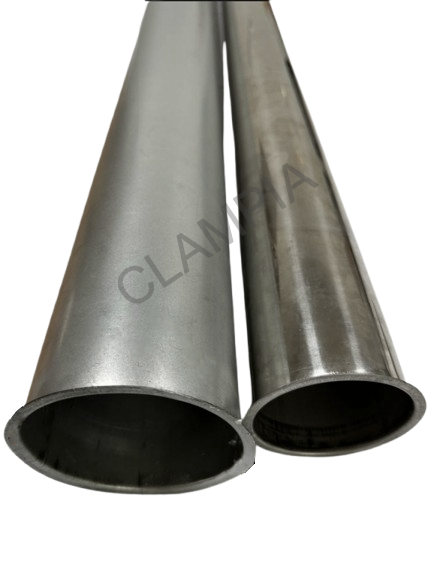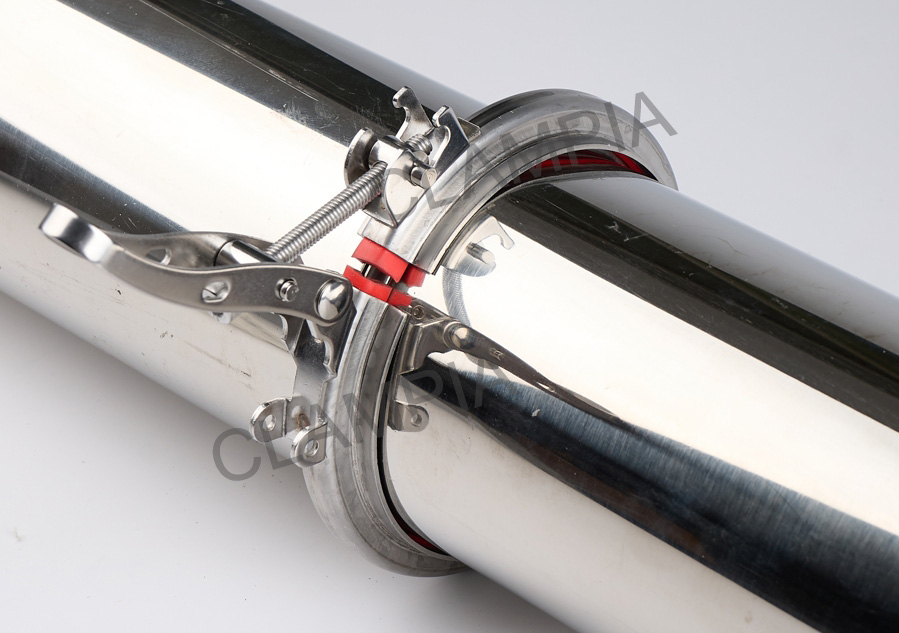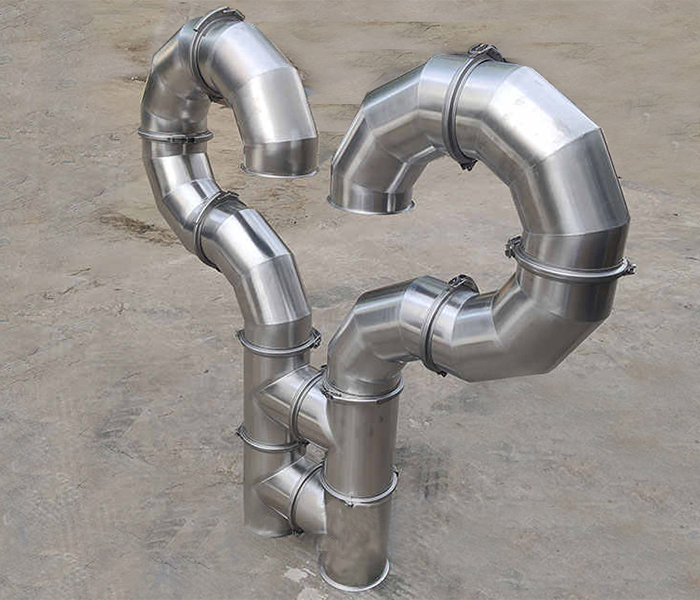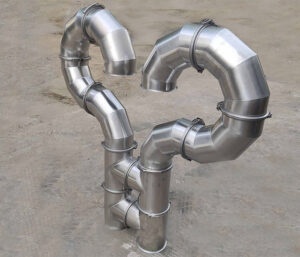
Here’s What You Really Need to Know
Before we dive deep, let me share something I wish someone had shown me when I first started. Here’s a straightforward comparison that’ll save you hours of research:
| Feature | Stainless Steel | Galvanized Steel | Aluminum |
|---|---|---|---|
| Lifespan | 30+ years | 10-15 years | 15-20 years |
| Corrosion Resistance | Top notch | Just okay | Pretty good |
| Initial Cost | Yeah, it’s pricey | Budget-friendly | Middle ground |
| Maintenance Cost | Barely any | Regular upkeep needed | Some work needed |
| Heat Resistance | Up to 1500°F | Up to 400°F | Up to 400°F |
| Recyclability | 100% | 100% | 100% |
Why It’s Worth Every Penny
I remember visiting a food processing plant last year that had just replaced their regular steel ducts for the third time in 15 years. If they’d gone with stainless steel from the start, they’d have saved a ton of money and headaches. Here’s what makes it special:
- It’s incredibly tough (I’ve seen these systems last 30+ years)
- You won’t see rust or corrosion (even in harsh environments)
- It’s super easy to clean (great for strict hygiene requirements)
- Once it’s installed, you can pretty much forget about it
Real Industry Solutions
Let me share what I’ve seen different industries do with stainless steel ductwork. Here’s a breakdown based on actual installations we’ve done:
| Industry | What They Needed | Why They Chose Stainless | Required Standards |
|---|---|---|---|
| Food Processing | Keeping things clean | No bacteria buildup, easy cleaning | FDA, USDA |
| Pharmaceutical | Ultra-clean air | Zero contamination risk | GMP, ISO 14644 |
| Chemical | Handle harsh stuff | Doesn’t corrode or break down | ASME, ASTM |
| Labs | Clean air flow | Precise control, no reactions | ASHRAE, NFPA |
Let’s Talk Money – The Real Cost Breakdown
Here’s something interesting I’ve noticed over the years – the initial cost makes people nervous, but check out how it plays out over time:
| Cost Factor | Year 1 | Year 10 | Year 20 | Year 30 |
|---|---|---|---|---|
| Upfront Cost | Ouch! | – | – | – |
| Maintenance | Coffee money | Lunch money | Lunch money | Lunch money |
| Replacements | None needed | Still good | Still good | Maybe minor fixes |
| Energy Bills | Lower | Lower | Lower | Lower |
Installation Tips from the Trenches
Having overseen countless installations, here’s what really matters:
- Get a crew that knows their stuff (I’ve seen DIY disasters)
- Make sure those welds are perfect
- Don’t skimp on the supports
- Double-check everything (trust me, it’s worth it)
Real Installation Challenges I’ve Seen
You know what? Let me share some real installation headaches I’ve dealt with over the years. These are the kind of things you only learn through experience:

- Watch those seals like a hawk – Just last month, I saw a system where the flanges weren’t properly aligned. Result? Tiny gaps between the ducts and clamps that caused all sorts of problems. Trust me, you don’t want to deal with that headache.
- Flange formation matters – Here’s something that drives me crazy: poorly formed flanges. I’ve seen installations where someone rushed this part, and guess what? The clamps couldn’t get a proper grip. That’s a leak waiting to happen!
- A word about blast gates – Here’s a tricky one, especially with larger sizes. I remember a job where someone ignored the vertical alignment on a big blast gate installation. The blade ended up being blocked always, the cylinder cann’t control it smoothly. Not fun explaining that to the client!
- Vertical support is crucial – Learned this one the hard way: when you’re installing blast gates, especially the big boys, you’ve got to think about gravity. I always tell my team to double-check the vertical alignment – it’s all about making sure those blades and cylinders play nice together.
- Check movement before finishing – I make it a rule: test every blast gate’s movement before calling it done. You’d be surprised how many times this final check has saved us from callbacks.
Here’s a pro tip I always share with my installation teams: take your time with the details. Sure, it might look like just metal tubes to some people, but getting these small things right makes the difference between a system that runs smoothly for decades and one that gives you constant grief.
The Green Angle
Here’s something cool – a client recently got LEED certification points partly because of their stainless steel ductwork choice. It’s not just tough, it’s eco-friendly too:
- You can recycle every bit of it
- It’ll probably outlast the building
- Saves energy over time
- Won’t end up in a landfill
Real-World Maintenance Schedule
| When | What to Check | Need a Pro? | What It’ll Cost |
|---|---|---|---|
| Monthly | Quick walkthrough | Nah, do it yourself | Free |
| Quarterly | Basic checkup | Maybe | $100-200 |
| Yearly | Thorough inspection | Definitely | $300-500 |
| Every 5 Years | Deep clean & check | Yes, get an expert | $500-1000 |
Questions You Might Be Wondering About
“What makes stainless steel worth the investment?”
Let me tell you from experience – I’ve installed every type of ductwork out there, and nothing comes close to stainless steel for durability and reliability. It’s like the difference between buying a cheap tool that breaks every few months and investing in a professional-grade one that lasts for years. In demanding industrial settings, it’s not just about being “better” – it’s about solving real problems that cost businesses serious money.
“How long will this stuff actually last?”
Here’s what’s amazing – I’ve got installations from my early days still running like new. With basic maintenance (and I mean really basic), you’re looking at 30+ years of solid performance. I just inspected a system we installed in a food processing plant back in ’02, and it looks almost brand new. You just can’t say that about other materials.
“Is it really that different from regular ductwork?”
Absolutely. Let me share something from just last month – a pharmaceutical company called us in after fighting constant issues with their regular steel ducts. The difference after switching to stainless was like night and day – no more contamination worries, no rust problems, and their maintenance team practically forgot the ducts existed!
“What about the cost compared to other options?”
Here’s the thing – I’ve had clients initially balk at the price tag, but five years later, they’re thanking me. Think about it: minimal maintenance costs, no replacement headaches, better energy efficiency (one client saw their HVAC costs drop 15%!), and incredible durability. When you do the math over 10-20 years, stainless steel usually ends up being the budget-friendly choice.
Ready to Make a Smart Choice?
Look, I know this is a big decision. At CLAMPIA, we’ve helped countless businesses figure out their ventilation needs. Check out our sheet metal solutions or give us a call – we’ll talk through your specific situation.
Want some light reading? Here are some resources I actually find useful:
- SMACNA’s latest guidelines
- ASHRAE’s recommendations
- EPA’s environmental standards
- FDA’s hygiene requirements
Got questions? We’re here to help. Contact Clampia now. Let’s figure out what works best for your situation.





